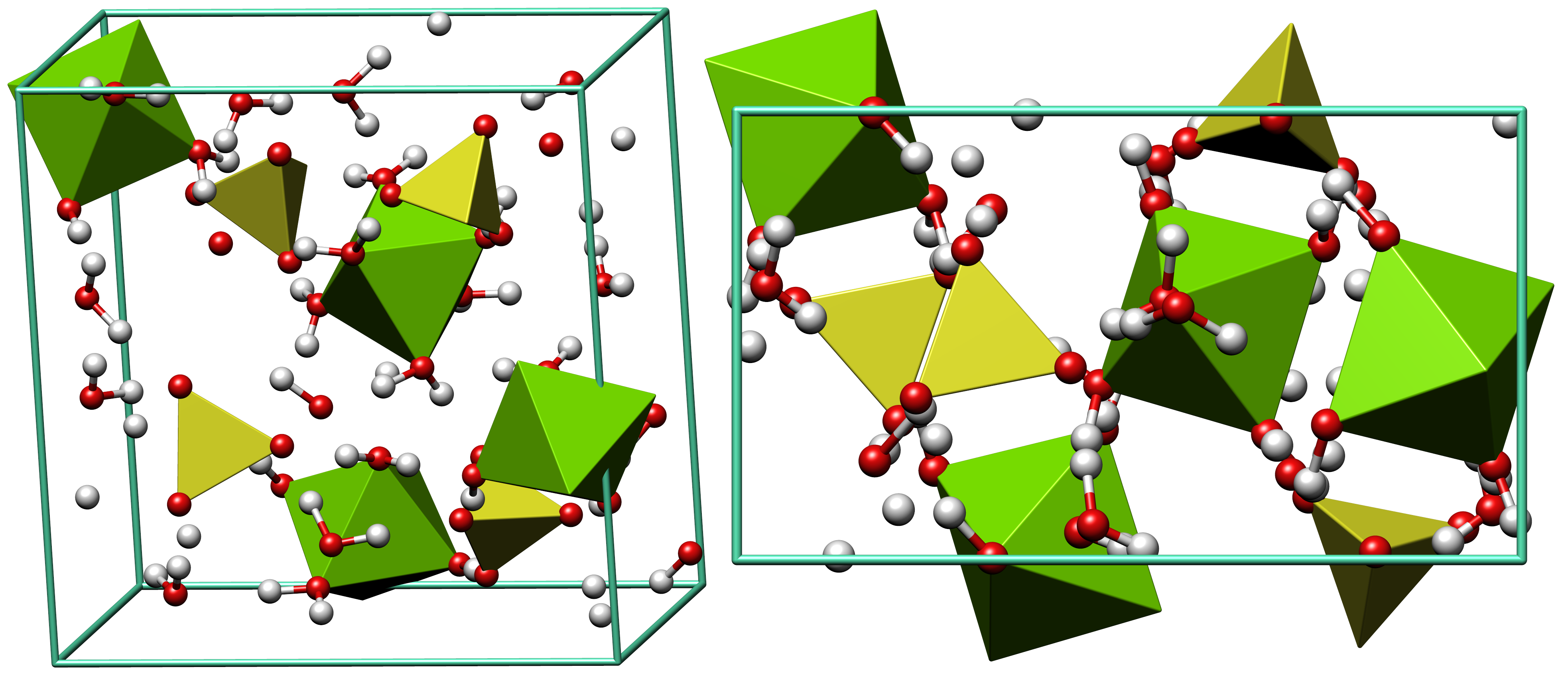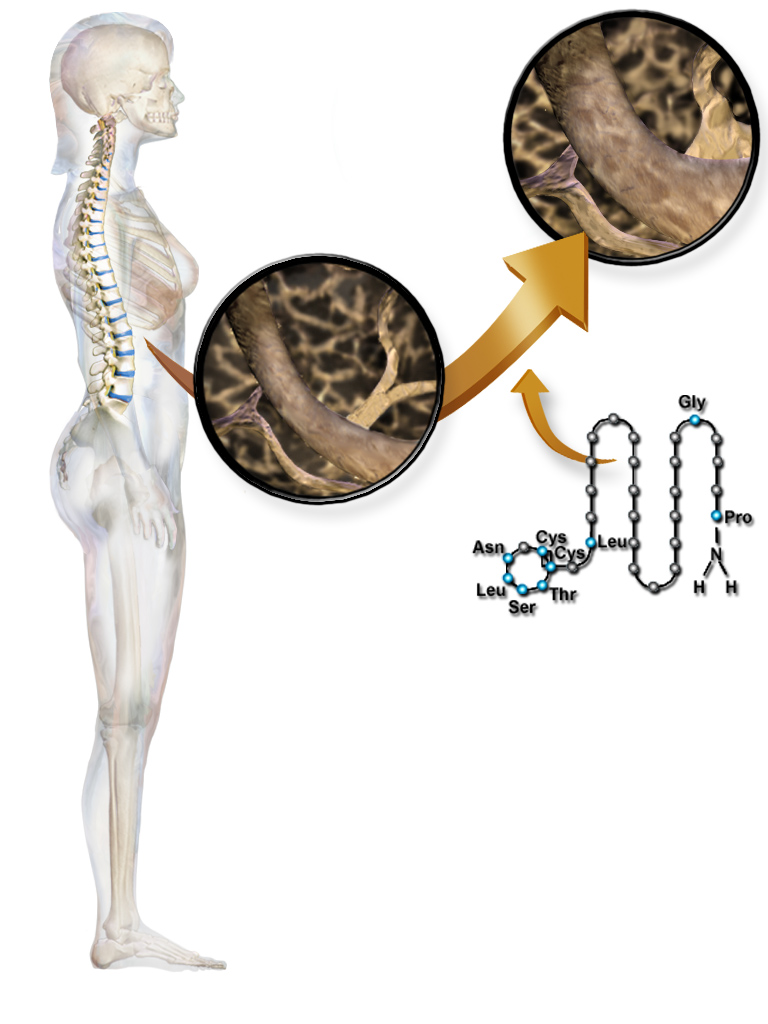|
Stool Osmotic Gap
Stool osmotic gap is a measurement of the difference in solute types between serum and feces, used to distinguish among different causes of diarrhea. Feces is normally in osmotic equilibrium with blood serum, which the human body maintains between 290–300 mOsm/kg. However, the solutes contributing to this total differ. Serum is mostly sodium and potassium salts (as reflected in the formulas for serum osmol gap and anion gap), while the digestive tract contains significant amounts of other compounds. Stool osmotic gap is a measure of the concentration of those other compounds. Stool osmotic gap is calculated as 290 mOsm/kg − 2 × (stool Na + stool K). 290 mOsm/kg is the presumed stool osmolality, and the measured concentration of sodium and potassium cations is doubled to account for the corresponding anions which must be present. A normal gap is between 50 and 100 mOsm/kg, corresponding to the concentration of other solutes such as magnesium salts and sugars. ... [...More Info...] [...Related Items...] OR: [Wikipedia] [Google] [Baidu] |
Serum (blood)
Serum () is the fluid and solute component of blood which does not play a role in clotting. It may be defined as blood plasma without the clotting factors, or as blood with all cells and clotting factors removed. Serum includes all proteins not used in blood clotting; all electrolytes, antibodies, antigens, hormones; and any exogenous substances (e.g., drugs or microorganisms). Serum does not contain white blood cells ( leukocytes), red blood cells ( erythrocytes), platelets, or clotting factors. The study of serum is serology. Serum is used in numerous diagnostic tests as well as blood typing. Measuring the concentration of various molecules can be useful for many applications, such as determining the therapeutic index of a drug candidate in a clinical trial. To obtain serum, a blood sample is allowed to clot ( coagulation). The sample is then centrifuged to remove the clot and blood cells, and the resulting liquid supernatant is serum. Clinical and laborat ... [...More Info...] [...Related Items...] OR: [Wikipedia] [Google] [Baidu] |
Epsom Salt
Epsomite, Epsom salt, or magnesium sulfate heptahydrate, is a hydrous magnesium sulfate mineral with formula MgSO4·7H2O. Epsomite crystallizes in the orthorhombic system as rarely found acicular or fibrous crystals, the normal form is as massive encrustations. It is colorless to white with tints of yellow, green and pink. The Mohs hardness is 2 to 2.5 and it has a low specific gravity of 1.67. It is readily soluble in water. It absorbs water from the air and converts to hexahydrate with the loss of one water molecule and a switch to monoclinic structure. Etymology It was first systematically described in 1806 for an occurrence near Epsom, Surrey, England, after which it was named. Discovery and occurrence Epsomite forms as encrustations or efflorescences on limestone cavern walls and mine timbers and walls, rarely as volcanic fumarole deposits, and as rare beds in evaporite layers such as those found in certain bodies of salt water. It occurs in association with melanteri ... [...More Info...] [...Related Items...] OR: [Wikipedia] [Google] [Baidu] |
Laxative
Laxatives, purgatives, or aperients are substances that loosen stools and increase bowel movements. They are used to treat and prevent constipation. Laxatives vary as to how they work and the side effects they may have. Certain stimulant, lubricant and saline laxatives are used to evacuate the colon for rectal and bowel examinations, and may be supplemented by enemas under certain circumstances. Sufficiently high doses of laxatives may cause diarrhea. Some laxatives combine more than one active ingredient. Laxatives may be administered orally or rectally. Types Bulk-forming agents Bulk-forming laxatives, also known as roughage, are substances, such as fiber in food and hydrophilic agents in over-the-counter drugs, that add bulk and water to stools so that they can pass more easily through the intestines (lower part of the digestive tract). Properties * Site of action: small and large intestines * Onset of action: 12–72 hours * Examples: dietary fiber, Metamuc ... [...More Info...] [...Related Items...] OR: [Wikipedia] [Google] [Baidu] |
Factitious Diarrhea
Factitious diarrhea is a condition in which a person deliberately produces diarrhea, most commonly by surreptitious laxative abuse (''laxative abuse syndrome''). These people tend to have persistent and unexplained watery diarrhea that is high in volume and frequency and, despite extensive evaluation, the cause may remain unknown. Many cases may mimic inflammatory bowel disease or malabsorption syndromes. Bowel movements are generally about 10 to 20 a day and may be especially associated with nocturnal movements. Factitious diarrhea is most often seen in people of high socioeconomic status and many are employed in the medical field. Melanosis coli is a frequent find in long-standing factitious diarrhea. It demonstrates hyperpigmentation of the colon with white lymph nodes showing through on colonoscopy. An alternative means of diagnosis is by detecting pigment in macrophages Macrophages (abbreviated as M φ, MΦ or MP) ( el, large eaters, from Greek ''μακρός'' (') = lar ... [...More Info...] [...Related Items...] OR: [Wikipedia] [Google] [Baidu] |
Calcitonin
Calcitonin is a 32 amino acid peptide hormone secreted by parafollicular cells (also known as C cells) of the thyroid (or endostyle) in humans and other chordates. in the ultimopharyngeal body. It acts to reduce blood calcium (Ca2+), opposing the effects of parathyroid hormone (PTH). Its importance in humans has not been as well established as its importance in other animals, as its function is usually not significant in the regulation of normal calcium homeostasis. It belongs to the calcitonin-like protein family. Historically calcitonin has also been called thyrocalcitonin. Biosynthesis and regulation Calcitonin is formed by the proteolytic cleavage of a larger prepropeptide, which is the product of the CALC1 gene (). It is functionally an antagonist with PTH and Vitamin D3. The CALC1 gene belongs to a superfamily of related protein hormone precursors including islet amyloid precursor protein, calcitonin gene-related peptide, and the precursor of adrenomedullin. Secre ... [...More Info...] [...Related Items...] OR: [Wikipedia] [Google] [Baidu] |
Medullary Thyroid Cancer
Medullary thyroid cancer is a form of thyroid carcinoma which originates from the parafollicular cells (C cells), which produce the hormone calcitonin.Hu MI, Vassilopoulou-Sellin R, Lustig R, Lamont JP"Thyroid and Parathyroid Cancers"in Pazdur R, Wagman LD, Camphausen KA, Hoskins WJ (EdsCancer Management: A Multidisciplinary Approach 11 ed. 2008. Medullary tumors are the third most common of all thyroid cancers and together make up about 3% of all thyroid cancer cases. MTC was first characterized in 1959. Approximately 25% of medullary thyroid cancer cases are genetic in nature, caused by a mutation in the RET proto-oncogene. When MTC occurs by itself it is termed sporadic medullary thyroid cancer. Medullary thyroid cancer is seen in people with multiple endocrine neoplasia type 2A and 2B. When medullary thyroid cancer due to a hereditary genetic disorder occurs without other endocrine tumours it is termed familial medullary thyroid cancer. Signs and symptoms The major clinical ... [...More Info...] [...Related Items...] OR: [Wikipedia] [Google] [Baidu] |
Gastrinoma
Gastrinomas are neuroendocrine tumors (NETs), usually located in the duodenum or pancreas, that secrete gastrin and cause a clinical syndrome known as Zollinger–Ellison syndrome (ZES). A large number of gastrinomas develop in the pancreas or duodenum, with near-equal frequency, and approximately 10% arise as primary neoplasms in lymph nodes of the pancreaticoduodenal region ( gastrinoma triangle). Most gastrinomas are sporadic (75–80%), whereas approximately 20–25% are associated with multiple endocrine neoplasia type 1 (MEN-1). Over 50% of gastrinomas are malignant and can metastasize to regional lymph nodes and liver. One fourth of gastrinomas are related to multiple endocrine neoplasia type 1, Zollinger–Ellison syndrome, peptic ulcer disease. Signs and symptoms Gastrinoma in the early stages will have signs and symptoms of indigestion or similar to irritable bowel disease (IBD) such as: * Hypergastrinemia * Refractory or recurrent peptic ulcers involving duodenum * Chr ... [...More Info...] [...Related Items...] OR: [Wikipedia] [Google] [Baidu] |
VIPoma
A VIPoma or vipoma () is a rare endocrine tumor that overproduces vasoactive intestinal peptide (thus ''VIP'' + ''-oma''). The incidence is about 1 per 10,000,000 per year. VIPomas usually (about 90%) originate from the non-β islet cells of the pancreas. They are sometimes associated with multiple endocrine neoplasia type 1. Roughly 50–75% of VIPomas are malignant, but even when they are benign, they are problematic because they tend to cause a specific syndrome: the massive amounts of VIP cause a syndrome of profound and chronic watery diarrhea and resultant dehydration, hypokalemia, achlorhydria, acidosis, flushing and hypotension (from vasodilation), hypercalcemia, and hyperglycemia. This syndrome is called Verner–Morrison syndrome (VMS), WDHA syndrome (from watery diarrhea–hypokalemia–achlorhydria), or pancreatic cholera syndrome (PCS). The eponym reflects the physicians who first described the syndrome. Symptoms and signs The major clinical features are prolong ... [...More Info...] [...Related Items...] OR: [Wikipedia] [Google] [Baidu] |
Vasoactive Intestinal Peptide
Vasoactive intestinal peptide, also known as vasoactive intestinal polypeptide or VIP, is a peptide hormone that is vasoactive in the intestine. VIP is a peptide of 28 amino acid residues that belongs to a glucagon/secretin superfamily, the ligand of class II G protein–coupled receptors. VIP is produced in many tissues of vertebrates including the gut, pancreas, and suprachiasmatic nuclei of the hypothalamus in the brain. VIP stimulates contractility in the heart, causes vasodilation, increases glycogenolysis, lowers arterial blood pressure and relaxes the smooth muscle of trachea, stomach and gallbladder. In humans, the vasoactive intestinal peptide is encoded by the ''VIP'' gene. VIP has a half-life (t½) in the blood of about two minutes. Function In the body VIP has an effect on several tissues: In the digestive system, VIP seems to induce smooth muscle relaxation ( lower esophageal sphincter, stomach, gallbladder), stimulate secretion of water into pancreatic jui ... [...More Info...] [...Related Items...] OR: [Wikipedia] [Google] [Baidu] |
Whipple's Disease
Whipple's disease is a rare systemic infectious disease caused by the bacterium '' Tropheryma whipplei''. First described by George Hoyt Whipple in 1907 and commonly considered as a gastrointestinal disorder, Whipple's disease primarily causes malabsorption, but may affect any part of the human body, including the heart, brain, joints, skin, lungs and the eyes. Weight loss, diarrhea, joint pain, and arthritis are common presenting symptoms, but the presentation can be highly variable in certain individuals, and about 15% of patients do not have the standard signs and symptoms. Whipple's disease is significantly more common in men, with 87% of patients diagnosed being male. When recognized and treated, Whipple's disease can usually be cured with long-term antibiotic therapy, but if the disease is left undiagnosed or untreated, it can ultimately be fatal. Signs and symptoms The most common symptoms are diarrhea, abdominal pain, weight loss, and joint pains. The joint pains may be ... [...More Info...] [...Related Items...] OR: [Wikipedia] [Google] [Baidu] |
Lactulose
Lactulose is a non-absorbable sugar used in the treatment of constipation and hepatic encephalopathy. It is used by mouth for constipation and either by mouth or in the rectum for hepatic encephalopathy. It generally begins working after 8–12 hours, but may take up to 2 days to improve constipation. Common side effects include abdominal bloating and cramps. A potential exists for electrolyte problems as a result of the diarrhea it produces. No evidence of harm to the baby has been found when used during pregnancy. It is generally regarded as safe during breastfeeding. It is classified as an osmotic laxative. Lactulose was first made in 1929, and has been used medically since the 1950s. It is on the World Health Organization's List of Essential Medicines. It is available as a generic and brand-name product. Lactulose is made from the milk sugar lactose, which is composed of two simple sugars, galactose and glucose. History In 1957, Peitele discovered that lactulose is ... [...More Info...] [...Related Items...] OR: [Wikipedia] [Google] [Baidu] |
Inflammation
Inflammation (from la, wikt:en:inflammatio#Latin, inflammatio) is part of the complex biological response of body tissues to harmful stimuli, such as pathogens, damaged cells, or Irritation, irritants, and is a protective response involving immune cells, blood vessels, and molecular mediators. The function of inflammation is to eliminate the initial cause of cell injury, clear out necrotic cells and tissues damaged from the original insult and the inflammatory process, and initiate tissue repair. The five cardinal signs are heat, pain, redness, swelling, and Functio laesa, loss of function (Latin ''calor'', ''dolor'', ''rubor'', ''tumor'', and ''functio laesa''). Inflammation is a generic response, and therefore it is considered as a mechanism of innate immune system, innate immunity, as compared to adaptive immune system, adaptive immunity, which is specific for each pathogen. Too little inflammation could lead to progressive tissue destruction by the harmful stimulus (e.g. b ... [...More Info...] [...Related Items...] OR: [Wikipedia] [Google] [Baidu] |




